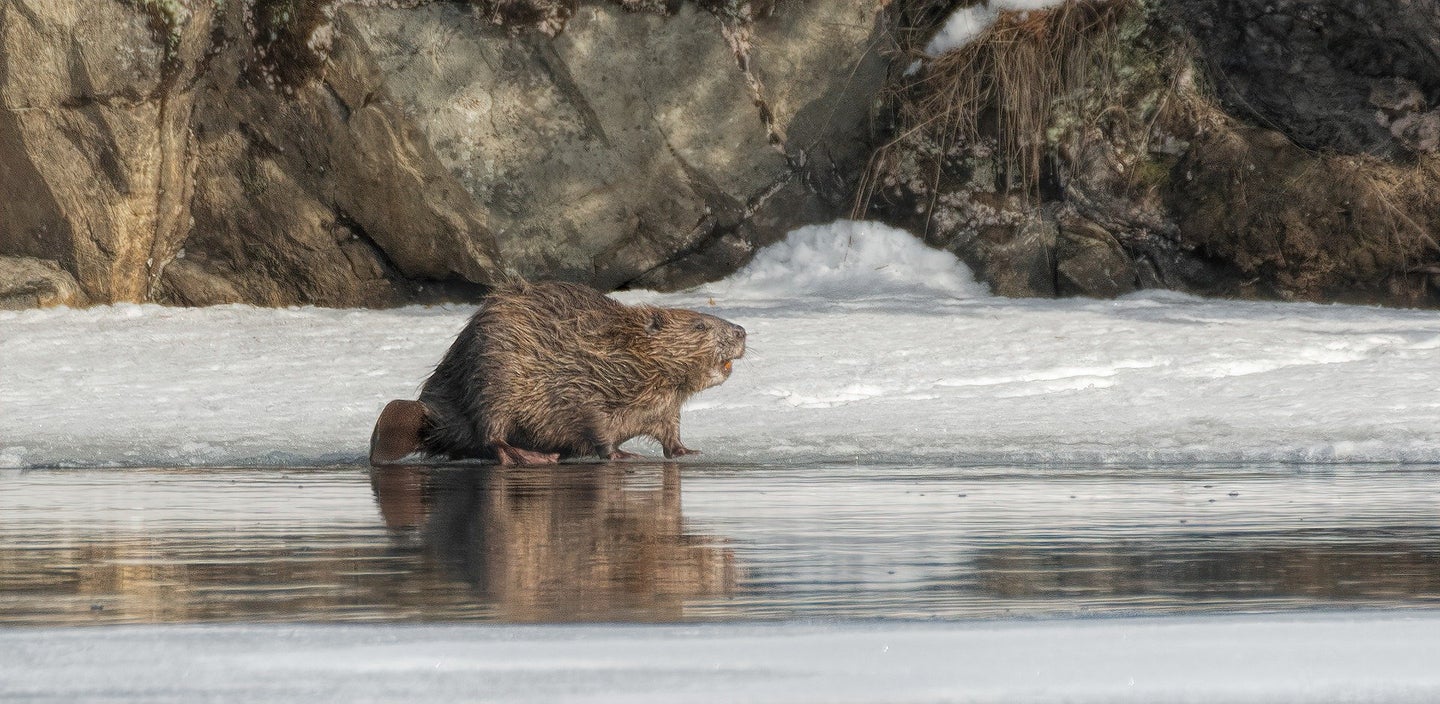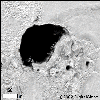Beavers might be making the Arctic melt even faster
As the rodents move into the tundra, they could be furthering climate change.

Carbon pollution is causing all sorts of weird effects on the planet, including dramatic weather shifts and reshuffling ecosystems. Every day brings a new surprise driven by the cascading impacts of warming the Earth. Now, a new study in Environmental Research Letters shows that a warming climate may have unleashed beavers upon the tundra in the Alaskan Arctic—and their activities could be accelerating the loss of permafrost.
In Alaska and Canada, beavers have mostly made their homes in forests. But things are changing. Summers are longer, seasonal winter ice is thinner, and shrubs are increasingly sprouting up, making the tundra an increasingly appealing place for the rodents. In recent years, researchers have documented beavers setting up their dams in these treeless landscapes, and more lakes are now pocketing the tundra.
Benjamin Jones, a geographer at the University of Alaska Fairbanks, wondered if beavers were to blame for some of these changes. Using 12 years of high-resolution satellite data or a 100-square-kilometer area (almost 25,000 acres) on the northern Baldwin Peninsula in northwestern Alaska, he and his research team conducted a beaver census. They mapped dams and adjacent water bodies, and calculated how much surface water increased over time.
The rodents have really taken a liking to the tundra. The number of beaver dams in the study area shot up from just two in 2002 to 98 in 2019. At the same time, the area of ponds and lakes went up, from 594 hectares to 643 hectares (about 1468 and 1589 acres, respectively). Of that increase, beavers were responsible for 66 percent. “[The finding] has some pretty big implications for the dynamics of permafrost and thermokarst development in that area,” says Jones, the lead author of the study.

Beavers are ecosystem engineers. When they build dams on waterways, the rodents also shape their local environments, in part by creating wetlands that support numerous other species. In this case, however, they might be accidentally speeding up a process that could result in an increase in carbon emissions.
In the study, the beavers preferentially dammed streams in lake basin areas underlain by ice-rich permafrost. The pooled water warms the frozen soil, causing ice to melt and the ground to sink, deeping the ponds and storing even more water. And when that frozen ground thaws, microbes decompose the once-inaccessible organic carbon stored in the soil and release that carbon as carbon dioxide or methane (which one depends on factors like how wet the soil is). In essence, the beavers could be speeding up a feedback process set in motion by humans that will ultimately warm the planet more. “It could be that we’ve discovered another indicator for how these permafrost regions are changing,” says Jones. He says that while his research focused on a relatively small area where high-resolution data was available, beavers are known to inhabit permafrost regions all across Alaska and Canada. “A lot of studies have looked at lake area changes as an indicator of Arctic change … without really giving beavers much consideration,” he says.
“It’s a good, thought-provoking paper,” says Marilena Geng, a climate scientist studying permafrost at Memorial University of Newfoundland, who was not involved in the research. “There’s a new feedback loop that we can now consider.”
However, it’s important to note that the research team did not directly link increased permafrost thawing to beaver ponds. More watery surface area across the tundra is known to chip away at permafrost—that’s not in dispute. But Emily Fairfax, an ecohydrologist at California State University Channel Islands, says that you can’t apply that same relationship to beaver ponds. Instead, most beaver-created water bodies tend to be shallow, and thus are more likely to completely freeze over during winter, which would prevent a significant loss of permafrost. In a calculation based on typical beaver dam heights and winter temperatures in the study region, Fairfax argues that the majority of beaver ponds in the study area probably freeze through in winter and “are behaving more like shallow wetlands that go through freeze-thaw cycles just like the active layer of permafrost does.” Adds Fairfax, “The scale of impact the authors imply is overstated.”
Even if beavers are causing some extra melting, it’s hard to say how that would ultimately factor into how much soil carbon is stored or lost. As Fairfax points out, beaver ponds can retain water from thawed permafrost that would otherwise drain away. Dried permafrost soils, meanwhile, are highly flammable—and, if ignited, can release lots of carbon into the atmosphere.
And no scientist is saying we should be mad at beavers, which are known to provide many benefits to their native ecosystems. “Beavers are not the big force warming the arctic. Humans are,” says Fairfax. “We have warmed it so much that the ecosystem is shifting and it has become more hospitable to beaver.”
